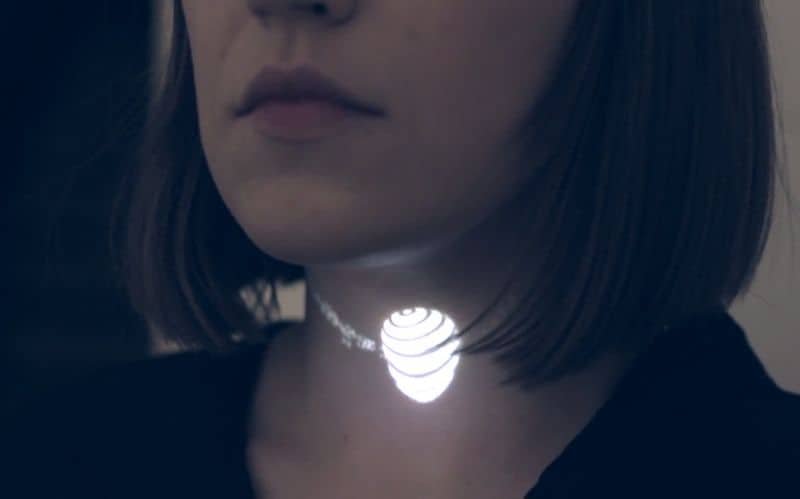How 3D printing is used in Jewelry Industry
Earlier 3D printing was aimed at creating prototypes. With the increase in creativity and demand, the scope of 3D printing has widened and it is used in many applications. Jewelry 3D printing is one of them. 3D printing jewelry might sound impossible to you but our creative brains with the use of technology have made it possible. This technology even lets you cost-effectively create unique designs. More and more designers print their designs with 3D printers. Since 3D printed pieces look and feel like traditionally casted objects, 3D printing jewelry is becoming mainstream. Let’s take a clear look at this process.
How to 3D print Jewelry?
- The process starts by creating a master model. Typically, it is created by hand using modeling clay or a special wax.
- A press form is created using the master model. A liquid has been applied to the master model. The object is halved after it has hardened. It is now possible to create intermediate wax models for casting purposes.
- The intermediate model is created using a special wax and press form.
- The casting mold is created by covering the intermediate model with gypsum.
- The liquid metal is poured after the gypsum inside the mold has hardened. It takes the place of wax.
- The finished product is then carefully removed, mechanically handled, and polished.

3D printing techniques
There are two common techniques when it comes to jewelry printing: One is investment casting and the other is direct printing.

Investment Casting
Investment Casting is a widely used technique for jewelry making. It produces parts through an 8 step process.
- Formation of Patterns
Earlier, when 3D printing was not brought to practice, the patterns were made by pouring a special casting wax into a metal mold. However, with the use of 3D printing, the pattern is directly printed from wax or a castable resin.
2. Assembling the mold
The next step is to prepare a casting tree. This can be done by assembling the molded or printed parts onto a casting tree. This step allows us to cast multiple parts at once.
3. Shell building
After completion of the pattern assembly, the casting tree is submerged multiple times in slurry and is left to dry. This solidifies after a while forming a ceramic outer layer on the pattern.
4. Melting
The pattern is placed in a furnace resulting in melting/burnout of the wax leaving the hollow design.
5. Pouring
Once the wax or resin used to form the pattern has been removed from the hollow ceramic mold, casting material is poured inside the mold. The mold is then left to cool and solidify. The parts are usually cast with the help of brass and then it is electroplated with the metal of choice during the finishing stage.
6. Removal of mold
To get the desired part, the ceramic mold needs to be removed. It is then removed by vibrations or knocking off the ceramic wall.
7. Cutting parts
As the molds were assembled on the casting tree they need to be removed. This is done by cutting off the mold tree. The part is cut off only if the ceramic shell is completely removed.
8. Finishing
The casts are treated with traditional finishing methods to get the final jewelry ready.
Direct printing
In direct printing, method parts are printed from metal powder. Parts are printed using gold, silver, or platinum alloys. This method requires appropriate finishing and is more expensive than investment casting. Being expensive, this method is not much popular for producing jewelry.
How 3D printing jewelry will benefit Jewelers and customers?

Cost-effective:
3D printing enables us to easily produce different patterns at a time. This reduces the overall cost involved which was caused using old methods.
Shorter produce time:
Manually crafting jewelry requires a lot of time as they need to be precise. 3D printing offers the same preciseness in less time and cost. Printing allows you to easily change the design of your model. That’s how 3D printing technology helps parts reach the market faster and at a low cost.
Create complex design:
Pieces of jewelry have intricate designs and carving them is a tedious and time-consuming job. Using this technology, designers can express their creativity without limitations.
Customized Jewelry:
The complexity of the design made the production of customized jewelry expensive but 3D printing has made it possible to customize as per the customer’s needs. On-site digital design with the use of 3D printing has made it possible to create multiple designs in less time.
Easier mass production
Another advantage of 3D printing is easier mass production with the flexibility to customize designs. Traditionally, the “master” pattern is made from an investment cast, hand-carved wax pattern. Vulcanized rubber molds are used to mass-produce wax patterns for lost wax casting.
3D printers can produce master models that can be used to produce RTV molds and even long-lasting high-temperature vulcanized rubber molds.
Limitations of 3D printing jewelry
Burn out remnants
A good quality cast part is produced through correct burnout in the investment casting procedure. A hasty burnout may damage the surface of the investment and, as a result, the finished casting’s details. A burnout that fails to reach high enough temperatures may leave resin or ash inside the investment, affecting metal flow and surface polish.
Support removal
Support is a critical part of the printer that enables to accurately produce parts. While DOD technology uses dissolvable support, SLA and DMLS/SLM require the support to manually be removed. For these technologies, any surface that support is in contact with will require extra post-processing to achieve a smooth finish.
Future of Jewellery industry

3D printing has a higher formerly cost and the perceived barrier-to-entry of digital jewelry design. Currently, 3D printing in the jewelry industry has a relatively small fraction of the market. Nonetheless, the 3D-printed jewelry market is set to rise as 3D printing technologies become more user-friendly and accessible. New, simple materials are lowering the learning curve, resulting in higher acceptance of the workflow and, as a result, market expansion.
The future of 3D printing in jewelry is bright. We’re seeing the stage set for a huge positive disruption with the wider industry adoption of workflow approaches, the emergence of new generations of designers versed in them, and the creation of new materials and technology. Be a part of this new approach of jewelry 3D printing with us. If you don’t know how to get started get on a 15 min free call with our experts to receive guidance for your model or upload your 3D file on our online 3D printing service.
